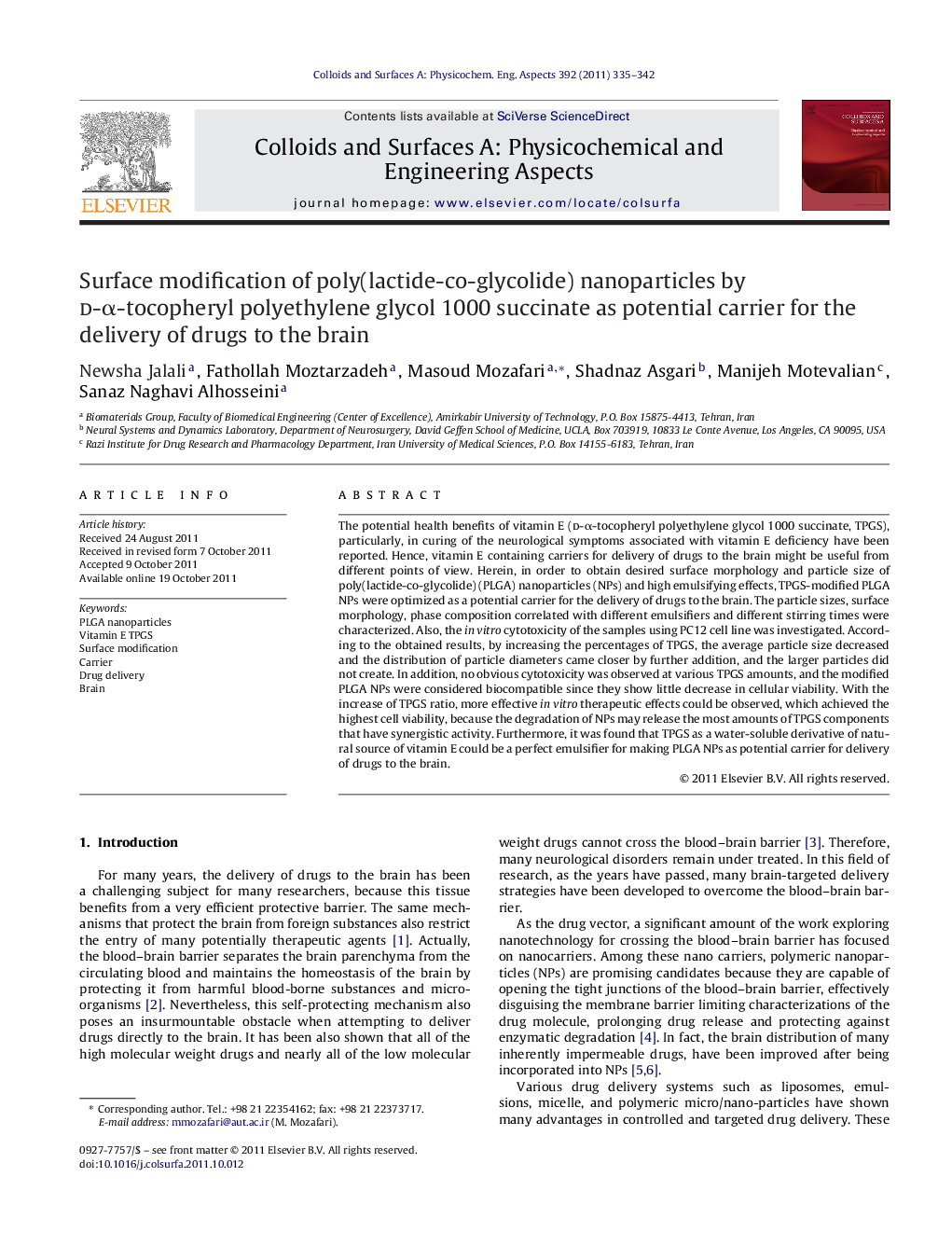| Article ID | Journal | Published Year | Pages | File Type |
|---|---|---|---|---|
| 594412 | Colloids and Surfaces A: Physicochemical and Engineering Aspects | 2011 | 8 Pages |
The potential health benefits of vitamin E (d-α-tocopheryl polyethylene glycol 1000 succinate, TPGS), particularly, in curing of the neurological symptoms associated with vitamin E deficiency have been reported. Hence, vitamin E containing carriers for delivery of drugs to the brain might be useful from different points of view. Herein, in order to obtain desired surface morphology and particle size of poly(lactide-co-glycolide) (PLGA) nanoparticles (NPs) and high emulsifying effects, TPGS-modified PLGA NPs were optimized as a potential carrier for the delivery of drugs to the brain. The particle sizes, surface morphology, phase composition correlated with different emulsifiers and different stirring times were characterized. Also, the in vitro cytotoxicity of the samples using PC12 cell line was investigated. According to the obtained results, by increasing the percentages of TPGS, the average particle size decreased and the distribution of particle diameters came closer by further addition, and the larger particles did not create. In addition, no obvious cytotoxicity was observed at various TPGS amounts, and the modified PLGA NPs were considered biocompatible since they show little decrease in cellular viability. With the increase of TPGS ratio, more effective in vitro therapeutic effects could be observed, which achieved the highest cell viability, because the degradation of NPs may release the most amounts of TPGS components that have synergistic activity. Furthermore, it was found that TPGS as a water-soluble derivative of natural source of vitamin E could be a perfect emulsifier for making PLGA NPs as potential carrier for delivery of drugs to the brain.
Graphical abstractThe possibility to use of vitamin E (TPGS) as an effective emulsifier to obtain PLGA nanoparticles was investigated. The particle size of the samples decreased as the stirring time decreased. The in vitro cytotoxicity evaluation of the optimized nanoparticles as carrier for delivery of drugs to the brain using PC12 nerve cell line did not show any signs of cytotoxicity.Figure optionsDownload full-size imageDownload as PowerPoint slideHighlights► In the weaker stirring times, smaller particle size ranges are obtained. ► TPGS as an emulsifier has superior advantages in comparison with PVA. ► The smallest particles in the range of nano are obtained by using TPGS. ► Using TPGS does not show any sign of cytotoxicity in contact with nerve cells.
